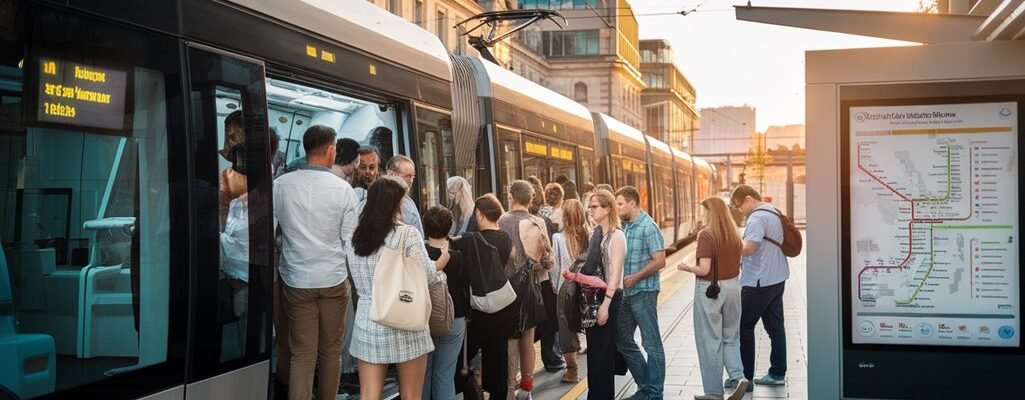
Public Transport Abroad: Understanding Local Systems Efficiently
When you step into a new city, figuring out the local public transport can feel overwhelming. You’ll want to avoid costly mistakes and wasted time, so understanding how ticketing works and which apps to trust is key. Knowing what signs mean and how to plan your routes in advance can make your journey smoother than you’d expect. But there are a few subtle details about local customs and safety that could change everything.
Researching Local Transport Options Before You Travel
How do you navigate a new city without getting lost or wasting time? Start by researching local transport options before you travel.
Check official transit websites to understand routes, schedules, and service hours. Look for maps and apps that cover buses, trains, trams, or metros in the area. Reading recent traveler reviews or forums can reveal any service quirks or tips.
Knowing the main transport hubs and popular connections helps you plan efficient routes. Also, identify if the city favors particular modes, like bike-sharing or ferries, for certain areas.
This preparation saves you from confusion and delays once you arrive. By familiarizing yourself with the local transit landscape, you’ll move confidently and make the most of your time exploring.
Understanding Ticketing Systems and Payment Methods
Once you’ve mapped out the local transport options, the next step is to get a clear grasp of ticketing systems and payment methods.
Different cities use various ticket types—single rides, day passes, or rechargeable cards. You’ll want to check if tickets are bought at stations, kiosks, or through mobile apps. Many places now accept contactless payments, so having a compatible card or smartphone app can save time.
Be aware that some systems require you to validate or tap your ticket before boarding. Also, look for discounts available to tourists, students, or seniors.
Understanding these details ahead of time helps you avoid fines and delays, ensuring smooth travel throughout your destination’s public transport network.
Navigating Maps and Route Planning Tools
Where can you find the most reliable information to get from point A to point B in a foreign city?
Start with official transit maps available at stations or online. They provide clear routes and stops.
Next, use route planning apps like Google Maps or local transit apps tailored to the city. These tools offer real-time updates, multiple route options, and estimated travel times.
Don’t forget to check downloadable PDFs or interactive maps on transit authority websites before your trip.
When using apps, input your destination and preferred travel times to get optimized routes.
Keep a screenshot or offline map handy in case of poor internet.
Recognizing Common Signs and Announcements
After you’ve planned your route, the next step is to recognize the signs and announcements that guide you along the way. Pay close attention to platform numbers, destination boards, and transfer instructions.
Many signs use universal symbols like arrows, wheelchair icons, or train silhouettes, so look for familiar visuals even if the language is foreign. Announcements often provide updates on delays or stops, so listen carefully, especially at busy stations.
If announcements are in another language, watch for visual cues or digital screens displaying the same info. Knowing basic transit terms in the local language, such as “next stop” or “exit,” can also help.
Staying alert to these signs and announcements ensures you won’t miss your stop and can navigate public transport smoothly abroad.
Tips for Using Different Modes of Transport Safely
While each mode of public transport has its own rules and challenges, you can stay safe by understanding key guidelines for buses, trains, trams, and taxis.
Always keep your belongings close and be aware of your surroundings to prevent theft. When boarding, wait for passengers to exit first and hold onto handrails while standing or moving.
On trains and trams, avoid standing near doors or emergency exits. If you’re taking a taxi, use licensed services and agree on the fare beforehand or ensure the meter is running.
Avoid displaying valuables openly and trust your instincts—if something feels off, seek help or choose another option. Staying alert and following these simple tips will help you navigate public transport safely abroad.
Cultural Etiquette and Local Travel Customs
Understanding how to stay safe on public transport is important, but being aware of cultural etiquette and local travel customs can make your journey smoother and more respectful.
For example, in Japan, you should keep your phone on silent and avoid loud conversations, while in Italy, a friendly greeting to the driver is common. Always check if priority seating is reserved for elderly or pregnant passengers and respect these rules.
In some countries, queuing properly is essential, whereas in others, a more informal approach prevails. Also, dress modestly if required, especially in conservative regions.
Observing local behaviors, like how people board or exit vehicles, helps you blend in and avoid misunderstandings. Adapting to these customs shows respect and enriches your travel experience.
Conclusion
By researching local transport options and understanding ticketing systems before you travel, you’ll navigate with ease. Use maps and route planners to stay on track, and pay attention to signs and announcements to avoid surprises. Always keep your belongings secure and follow safety tips when using different transport modes. Respect cultural etiquette and local customs to make your journey smoother and more enjoyable. With these steps, you’ll confidently explore public transport abroad hassle-free.




